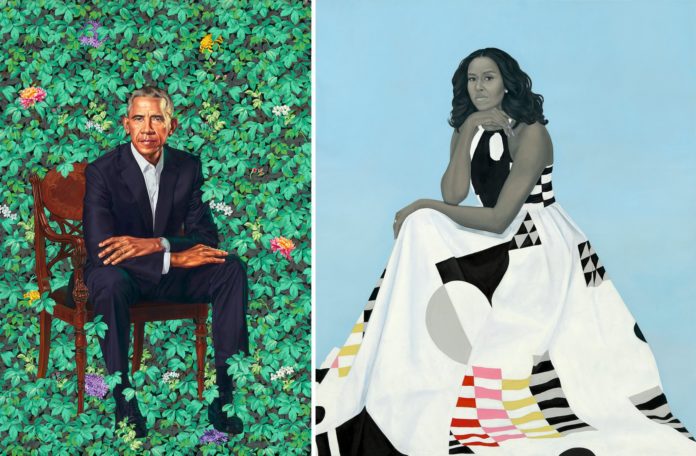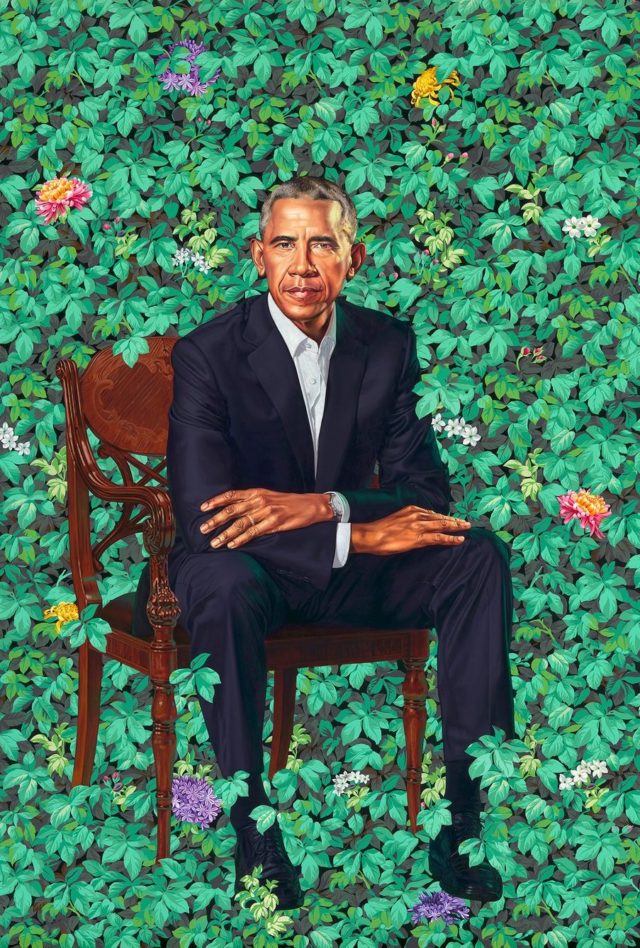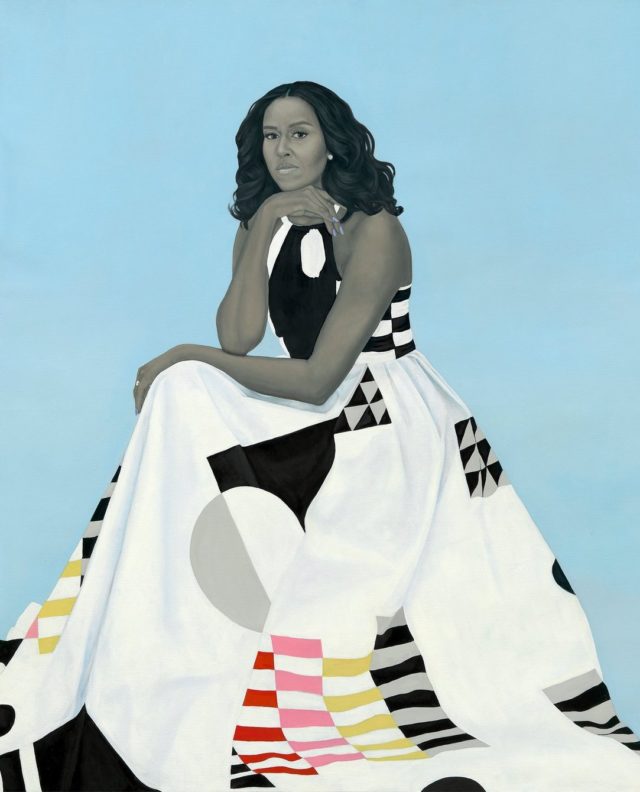
By Meredith Wagner | Arts & Life Editor
Former President Barack Obama selected artist Kehinde Wiley to paint his presidential portrait over one year ago at the same time Former First Lady Michelle Obama selected Baltimore-based artist Amy Sherald. Extensively reported by news outlets at the time, the media soon fell into a spell of silence regarding the portraits and their creators. The artists worked devotedly for over one year to create what likely would be the highlight of their careers. After the the reveal of the portraits over one week ago on Feb. 12, the silence was broken and the buzz surrounding their names reemerged, this time much louder than before.
Wiley, 40, who painted the portrait of Barack Obama, grew up in South Central Los Angeles during the ‘80s. His knack for replacing historically significant figures in his paintings with stylized, young and modern African Americans propelled him into the spotlight some years ago. Before being chosen to paint the Barack Obama portrait, Wiley was awarded the U.S. Department of State Medal of Arts in 2015.
Sherald, 44, who was raised in Columbus, Ga., harnesses a creative use of color to depict everyday, modern African-Americans, ultimately, according to the National Museum of Women in the Arts, “challenging the concept of color-as-race.” Before winning the National Portrait Gallery’s Outwin Boochever Portrait Competition, which landed her the commission for Michelle Obama’s portrait, Sherald’s subsequent work was hardly familiar to the average person and the art critic alike.
An unknown name to the gallery curators before the selection process began, Sherald’s prior work served as a strong and sufficient testament to her artistic abilities. According to a 2017 article from the New York Times, “The choice of Ms. Sherald adds a tantalizing element of risk to the commissions by virtue of her relative obscurity.”
Much of the general public has no doubt at least witnessed the portraits, whether in passing or in study. The dissemination of snapshots of the artist’s respective works have sparked a frenzy of discussion, much like a controversial political topic. Be they art historians or average people, it seems almost everyone has formed an opinion about the arguably revolutionary depictions of the Obamas.
And yet, the Obama portraits pose somewhat of a mystery to the general public. A surprise to those uninterested in art history or the study thereof — and even to some knowledgeable art enthusiasts — these portraits stand tall, both literally and symbolically, as a symbol for a new era in art, in politics and in portraiture.
Wiley’s Portrait of Barack Obama
Placed in front of a collection of symbolic, brightly-hued flora, Barack Obama sits comfortably in a vintage-carved wooden chair.
The exhibition label in the gallery defines the symbolism of the flowers for in-person viewers: “The chrysanthemums, for example, reference the official flower of Chicago. The jasmine evokes Hawaii, where he spent the majority of his childhood, and the African blue lilies stand in for his late Kenyan father.”
Beyond hidden messages, Wiley’s realistic precision in his rendering of Barack Obama establishes a clear message for the viewer. Contemplative and lost in thought, Barack Obama’s face is a near-perfect adaptation both of his philosophical tendencies and his real-life facial features.
The glow in his skin tone and the greens of the background create a sense of lightheartedness despite his serious gaze and posture, capturing well the essence of his contemplative and compassionate personality amid the heaviness and seriousness required of his position as president.
Critics claim that, though impressively detailed, Barack Obama appears to be floating in front of a wall of leaves, lacking depth and, to some, sophistication. Jokes and memes about Barack Obama emerging from a bush have circled the internet since last week’s reveal; whether in a spirit of play or of seriousness, this criticism missed the overarching point of the portrait. Barack Obama’s presidency was atypical in many respects, and the originality of his portrait will set him apart from past presidents on the museum wall, and in history books, for years to come.
Sherald’s Portrait of Michelle Obama
One of the pertinent questions being raised is whether or not the portraits accurately captured the leaders’ personalities, presence and positions in American history. Criticized more than Wiley’s depiction of Barack Obama, Sherald’s portrait has been especially ridiculed for failing to capture the first lady’s warm persona, turning a light-hearted, fun Michelle Obama into a gray, lifeless figure.
The Baltimore Sun stated otherwise, claiming that the application of monochrome hues for Michelle’s skin “doesn’t so much erase her subject’s race as declare its irrelevance.” Perhaps off-putting at first glance, her toned-down radiance is actually a powerful statement by the artist, which is evident in the style of her previous paintings, and which Michelle Obama was likely aware of in selecting this artist in 2017.
Among other topics of debate is whether or not Sherald’s portrait depicts Michelle realistically. Critics claim that, though perhaps executed well in general, the resemblance between the portrait and its subject is far from similar — an unforgivable disparity albeit a fairly original composition. But, in the words of a tweet from CNN White House Reporter Kate Bennett, “It’s not supposed to “look like her” in the traditional sense of portraiture. These portraits break the mold of how we as the viewer consider the depiction of a person.”
Just as art has evolved in waves of style and execution, the portraiture of this century, captured through these historic paintings, will be remembered as one of a turning point, representing the dramatic societal, technological, political and economic shifts of the twenty-first century.
The Obama portraits will be featured in the exhibit “America’s Presidents” at the National Portrait Gallery, which is the only place, aside from the White House, that houses a complete collection of presidential portraits.
***
The Obama portraits will be featured in the exhibit America’s Presidents at the National Portrait Gallery, which is the only place, aside from the White House, that houses a complete collection of presidential portraits. To learn more about the reason behind the craze over these paintings, read Time Magazine’s coverage of the history of presidential portraits here.







